Researchers have found that infants whose mothers don't get maternity leave are more likely to exhibit separation anxiety and insecure attachment than infants whose mothers were able to take maternity leave after birth. What's more, mothers who took at least 12 weeks off experienced a better understanding of child development, improved self-esteem, and fared better with job adaptation than mothers who had short or no maternity leave.[1]
Given the importance of taking time off for birth, it's a good idea to see if there is a way you can take at least some time off after having a baby. While the United States is one of the few countries in the world that doesn't require paid leave for new mothers, a patchwork of federal and state laws could make you eligible for maternity leave.[2]
Federal vs State Maternity Leave Laws
The Family and Medical Leave Act (FMLA) states that companies with 50 or more employees in 20 or more work weeks in the current calendar year offer 12 weeks of maternity leave to both parents. Employees of public agencies and local education agencies are also covered by this law, even if the employer has fewer than 50 employees. However, to qualify for maternity leave, employees of qualifying companies must have worked for the employer for at least 12 months and have at least 1,250 hours of service with the employer during this time. What's more, the location they work at must have at least 50 employees within a 75-mile range.[3]
Only eleven states have comprehensive paid family and medical leave laws. Six other states require companies to offer between six and twelve weeks of maternity leave but don't require companies to pay for this time off. Hawaii and Puerto Rico have TDI laws that provide partial wage replacement when someone takes disability leave, and these laws also cover pregnancy and childbirth.[4]
Understanding California Maternity Leave Laws
Pregnancy Disability Leave (PDL)
California pregnancy leave laws stipulate that any employee who works at a company with five or more employees is entitled to up to four months of disability leave per pregnancy. There should be a notice posted that outlines all the details. To take pregnancy disability leave, an employee must meet the same standards outlined in FMLA; however, the 75-mile range requirement doesn't apply.
An employer can ask an employee requesting pregnancy disability leave to provide a note from a
healthcare provider certifying that the patient is disabled and thus unable to work. However, the employer cannot force an employee to disclose the underlying condition causing the disability.[5]
California Family Rights Act (CFRA)
The California Family Rights Act (CFRA) states that employees can take up to 12 weeks of unpaid leave to bond with a new child. Eligibility requirements for new parents are the same as for pregnancy disability leave. If both parents work for the same employer, each parent can take up to twelve weeks off.[6]
Paid Family Leave (PFL)
California's Employee Development Department (EDD) provides short-term wage replacement for those taking unpaid maternity leave. You can file a claim online or by mail, and you'll need to send in the required supporting documents to verify your information. Claims can't be filed before you take family leave but must be filed no later than 41 days after you take family leave. You cannot claim benefits one year after the birth of a new child.
The EDD typically takes about 14 days to approve or deny a claim. During this time, the department may call you, your medical care provider, and/or your employer for more information. If your claim is denied, you can request an appeal within thirty days of receiving a disqualification notice.
Paid Family Leave isn't just available to employees, as people who don't qualify for leave under California pregnancy leave laws and maternity leave laws can also claim benefits. What's more, immigration and citizenship status don't impact a paid family leave claim.[7]
Eligibility and Employee Rights
Pregnancy disability and maternity leave rights in California are impacted by one's employment status. However, those who do qualify for either of these benefits have important rights.

An employee applying for pregnancy disability leave should give as much advance notice as possible. However, employers cannot demand a certain amount of notice as symptoms that make it difficult or impossible for a pregnant woman to work can come on with little or no advance warning.[5] Employees cannot be fired for asking for pregnancy disability leave or maternity leave, and they may file a request for leave once per pregnancy/childbirth.[5,6]
Employers must continue paying for the same group health benefits that a pregnant woman received before taking time off. Furthermore, employees who claim pregnancy disability leave or maternity leave must be reinstated to the same position or a comparable one with the same tasks, skills, benefits, and pay.[5,6]
Get Personalized Parental Support at Pregnancy Care Clinic
Every woman deserves top-tier, personalized healthcare and support during and after pregnancy. While federal and state laws have gaps that allow some to fall through the cracks, Pregnancy Care Clinic offers free services to women without discrimination. Our services include pregnancy testing, ultrasound exams, STI testing, healthcare consultation, peer counseling and education, and emotional support. We provide medical referrals for women who need to see a specialist, making it possible for you to get fast, efficient care should the need arise. We can also draw up documentation for an employee or the EDD so you can claim pregnancy disability leave, maternity leave, or file for paid family leave. We encourage women to see us as soon as they suspect they may be pregnant, but start services for women at all stages of pregnancy.
Do you suspect you're pregnant or know someone who could benefit from our services? We have two easily accessible locations, and you can
contact us by phone, email, or via our online contact form to schedule an appointment on a day/time that works best with your schedule.
Sources
1. Positive effect of maternity leave on attachment and quality of mother–child interactions. European Institute of Perinatal Mental Health. eipmh.com/positive-effect-of-maternity-leave-on-attachment-and-quality-of-mother-child-interactions/
2. ibid
3. Fact Sheet #28Q: Taking Leave from Work for Birth, Placement, and Bonding with a Child under the FMLA. United States Department of Labor. www.dol.gov/agencies/whd/fact-sheets/28q-taking-leave-for-birth-placement-child
4. Harper, J. (2024). Comprehensive Guide on Maternity Leave Laws by State. The HR Digest. www.thehrdigest.com/comprehensive-guide-on-maternity-leave-laws-by-state/#
5. Pregnancy Disability Leave Fact Sheet. Civil Rights Department, State of California. calcivilrights.ca.gov/wp-content/uploads/sites/32/2022/12/Pregnancy-Disability-Leave-Fact-Sheet_ENG.pdf
6. Expanded Family and Medical Leave in California. Civil Rights Department, State of California. calcivilrights.ca.gov/wp-content/uploads/sites/32/2023/02/Expanded-Family-And-Medical-Leave_ENG.pdf
7. Paid Family Leave Claim Process. Employee Development Department, State of California. edd.ca.gov/en/disability/pfl_claim_process/
Clinic Locations
San Diego - Southcrest
East County – Santee
Contact Us
East County: 619-442-4357
San Diego: 619-326-8595
Text Us: 619-442-0389
Our Services
- Free Urine Pregnancy Testing
- Ultrasound Exams
- STI Testing
- Health Provider Consultation
- Medical Referrals
- Natural Family Planning Information
- Peer Counseling & Education
- Emotional Support
- Maternity Clothes
- Support Classes
Quick Links
© Pregnancy Care Clinic 1994-2024 | 10201 Mission Gorge Rd., Suite K1, Santee CA 92071 | Website imagined and executed by RivalMind. | Privacy Policy




